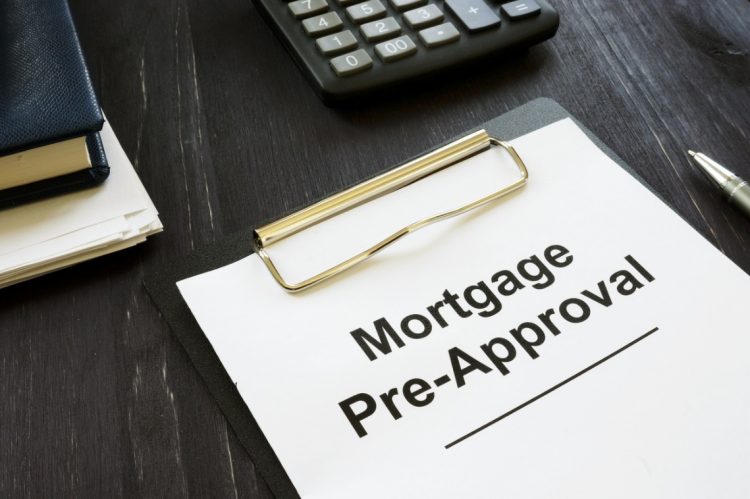Before you buy a home, unless you have the cash to purchase outright, you’ll need to get pre-approved. Understanding how mortgage pre-approvals work is essential. This means finding a lender that offers the type of mortgage you want and then going through the pre-approval process.
They will then give you a pre-approval letter that you can use to put an offer on a property you love. But how does the approval process work, and how long does mortgage pre-approval last?
We look at this critical home-buying requirement so you better understand the process.
What are mortgage pre-approvals?
Before you know how much you can afford to spend on a home, you must go through a mortgage pre-approval process with a lender. They will look into your income, your assets, any debts you have, as well as your credit score to decide how much they are willing to lend to you. This process can also determine your mortgage rate on the loan.
Getting pre-approval before seriously searching for a new home is a good idea. That way, you will only spend time looking at houses you can afford. Even if you expect to be able to get a certain amount from a lender, you will know for sure after you go through the pre-approval process.
While it is possible to begin your property search without a pre-approval letter seriously, some seller’s agents will require it. They want to be sure they aren’t wasting their time showing a home to someone without the funds available to buy it. A pre-approval letter will prevent this problem from happening.
Even if this is different in your area, the pre-approval letter can also help when making an offer on a home. If two buyers make an offer and only one has a pre-approval letter, guess which one will look better to the seller?
The pre-approval letter will show that the buyer has the means to purchase the house they’re interested in, giving the seller more confidence in their offer. Pre-approval also means you have to get your financial information ready, so there’ll be less to do during the closing to approve your home loan.
Pre-approval or prequalification?
While these two terms are frequently used interchangeably, there are differences. Prequalification involves fewer checks than pre-approval, so it might not show what mortgage you qualify for.
Prequalification doesn’t look at your credit report and is only an estimation of how much the lender will loan to you.
What are pre-approval letters?
When your lender has pre-approved you, they can give you a pre-approval letter. This letter will set out how much they are willing to lend to you, the interest rate, and other details about the mortgage.
This letter is crucial as real estate agents want to see it before showing you homes. It means they can be confident you can afford to purchase the house they offer.
The pre-approval letter can also be used when you make an offer. It indicates to the seller that you would likely get a mortgage for the value of their home.
How long does pre-approval take?
Getting pre-approved for a mortgage is reasonably straightforward. You must complete an application containing questions about your finances and the home you want to purchase.
The lender will check your credit history, looking at your income, assets, and recent financial transactions. They are doing all this to ensure you can, and are likely to, pay back the mortgage. If you don’t have a great history of paying back debts, like credit card bills, there could be problems. Mastering your finances before applying is crucial to get the best rates.
Typically, the pre-approval process takes little time, and you should receive confirmation in a day or two. The next step will be choosing the best mortgage for your needs.
How long does pre-approval last?
If you are wondering if mortgage pre-approvals expire, they do. Though pre-approval expiration varies between lenders, you can expect it to last 2 or 3 months.
The reason for the expiration is that people’s financial situations change, and the more time passes, increases the chances that the pre-approval won’t be valid.
Perhaps the borrower has done something that makes their financial situation worse. If they take out a new loan, their debt-to-income ratio will change, as will the pre-approval calculation. They may miss a credit card payment, reducing their credit score.
Changes like this could mean the borrower no longer qualifies for the mortgage they expect to get.
However, if you discover your credit score isn’t as good as expected, it might encourage you to make changes to improve your finances. If you do some things to improve your score, you could get a lower interest rate on the loan, saving you thousands of dollars on the mortgage.
Is it better to get multiple pre-approval letters?
Getting pre-approval from multiple lenders is possible, though it does mean hard inquiries on your credit report. However, these inquiries negatively affect your credit score, which isn’t something you want to do if you hope to have lower interest rates on your home loan.
However, if you make multiple similar inquiries within 14 days of the first, they will only count as one hard inquiry on your report. If you compare different lenders, ensure you don’t space out your pre-approval applications very much.
When is the best time to get a mortgage pre-approval?
So you don’t waste time on homes you can’t get a mortgage to buy, it’s better to get pre-approval at the beginning of your search. You should time your application to get a few months to search for a home before the pre-approval expires.
Final thoughts
You will have two or three months to use the letter to help search for a home once pre-approved. It will make being shown homes easier and make any offers look better to the seller.
Bill Gassett is the owner and founder of Maximum Real Estate Exposure.













Nice and informative info!